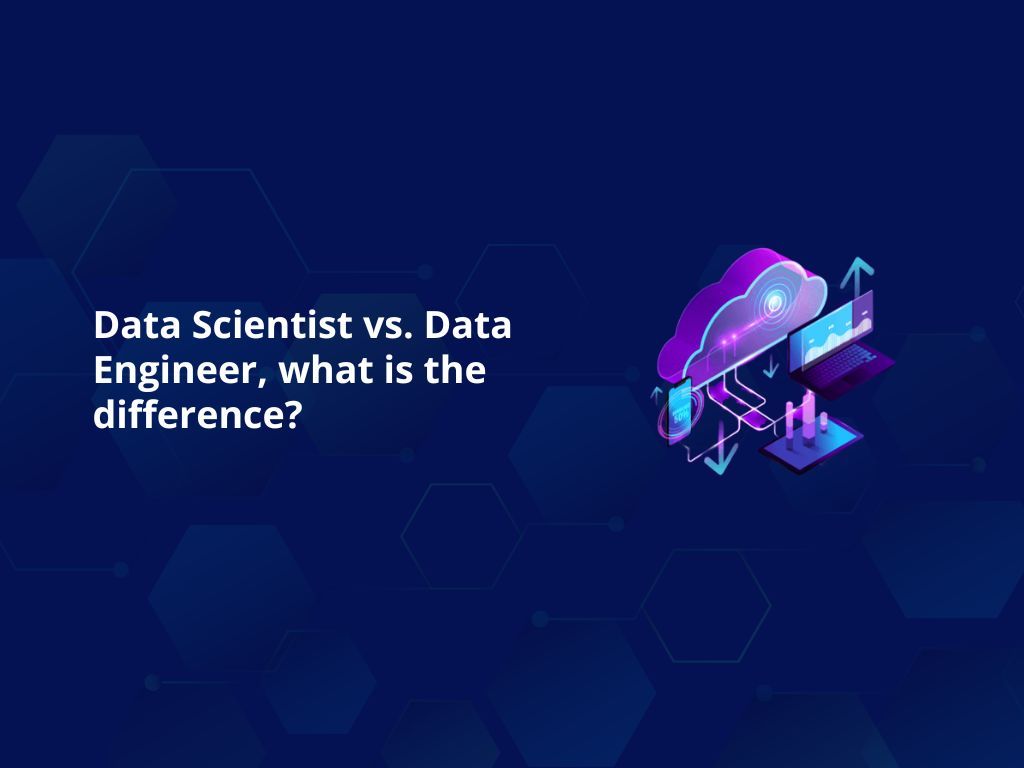Data Scientist vs Data Engineer, what is the difference?
It is important for a small company to differentiate between data scientist and data engineer roles since both roles have separate skill sets and responsibilities throughout an AI project.

To implement the right AI strategy within your organization you required to understand the distinctions between these two roles.
The lifecycle of an AI project typically consists of the following steps: data collection and preparation, exploratory data analysis, model development and validation, deployment, and monitoring. At each step, it is important to ensure that the data is clean and properly structured in order to obtain the best results.
Data Scientist
Data Scientists are responsible for leveraging data insights to generate actionable results, using methods such as machine learning, natural language processing (NLP), statistics, and predictive modeling. In MLOps workflows, Data Scientists are primarily responsible for developing and optimizing models, as well as writing software to validate the accuracy of data pipelines. They also conduct experiments and tune the models for improved performance. They are responsible for understanding the data and its content, performing exploratory data analysis, interpreting the results, making sure they fit the problem space and providing insights on how to improve them.
Data Engineer
The tasks of a data engineer can vary greatly depending on the project, however, some key activities include designing, building, and maintaining data pipelines; optimizing data architectures for scalability and performance; writing software for collecting, transforming, validating, and cleaning data; and developing APIs to expose data to other systems. In an MLOps workflow, it is the data engineer's job to build the infrastructure and automation frameworks needed for the reliable and efficient deployment of machine learning models.
Data engineers are responsible for transforming raw data into a working dataset that can be used by a data scientist. This usually involves extracting, cleaning, transforming, and loading data. They are also responsible for deploying the model in production and ensuring that it works perfectly under real-world conditions.
MLOps
When it comes to an MLOps workflow, a Data Engineer is responsible for setting up the automation framework and ensuring that data pipelines are running efficiently. On the other hand, a Data Scientist will use this infrastructure to develop models with accurate predictions. They will also conduct experiments and tune the models to improve accuracy. Both data scientists and data engineers are essential to a successful MLOps workflow as they play complementary roles that work together towards the same goal.
Limited resources in a small company
It is important for a small company to differentiate between data scientist and data engineer roles since both roles have separate skill sets and responsibilities throughout an AI project. For example, if your company only requires data analysis and model development, it would be more cost-effective to outsource the data engineering tasks. On the other hand, if your project requires data engineering skills such as ETL (Extract, Transform and Load), then it is better to hire a dedicated data engineer. Therefore, by understanding the differences between these two roles and their respective responsibilities, a small company can determine which tasks to outsource and which ones to hire for. This will help them save money, time, and resources.
Overall, data scientists and data engineers play a vital role in any AI project. By understanding the differences between these two roles, small companies can outsource the necessary tasks and save money, time, and resources. Furthermore, by assigning appropriate responsibilities to each role, they will be able to achieve better results. Therefore, it is important for a small company to differentiate between data scientist and data engineer roles.
Conclusion
The roles of a data scientist and data engineer may sometimes overlap, but it is key to understand the differences between them in order to hire the right consultant for your data project. Data Engineers are responsible for building pipelines, optimizing architectures, and collecting and transforming data, while Data Scientists leverage insights to generate actionable results and develop models. In an MLOps workflow, data engineers are responsible for building the infrastructure and automation frameworks needed for the deployment of models, while data scientists develop and optimize models, as well as validate the accuracy of data pipelines. Both roles are essential for a successful MLOps project.
It can be difficult for a small business to finance both data scientist and data engineer roles at the same time. In order to get the most out of your data project, it is important to conceptualize and differentiate between these two roles in order to determine which one best suits your needs. Outsourcing either role, depending on your specific data needs, can be a cost-effective way to get the job done. Knowing the roles and responsibilities of each will ensure that you make the right choice when it comes to hiring data consultants.
Lexunit is a small company, so we understand what that means when resources are limited, but either way, we need to deliver just in time. Understanding the differences helped us to focus on the right tasks at the right time and to see the full picture. Hopefully, we could shed some light on the differences and how to approach your hiring or outsourcing problem related to AI development.

